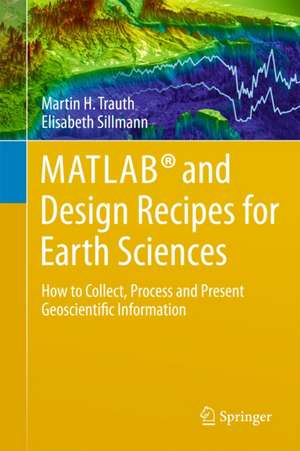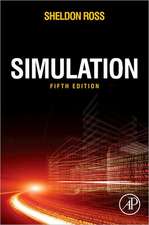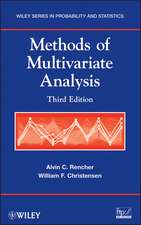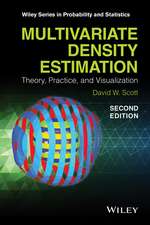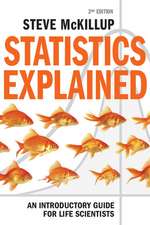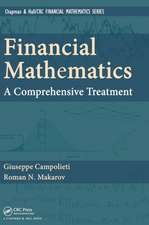MATLAB® and Design Recipes for Earth Sciences: How to Collect, Process and Present Geoscientific Information
Autor Martin Trauth, Elisabeth Sillmannen Limba Engleză Hardback – 14 sep 2012
Preț: 396.40 lei
Nou
Puncte Express: 595
Preț estimativ în valută:
75.85€ • 79.40$ • 63.13£
75.85€ • 79.40$ • 63.13£
Carte tipărită la comandă
Livrare economică 31 martie-14 aprilie
Preluare comenzi: 021 569.72.76
Specificații
ISBN-13: 9783642325434
ISBN-10: 3642325432
Pagini: 300
Ilustrații: XII, 292 p. With online files/update.
Dimensiuni: 155 x 235 x 25 mm
Greutate: 0.61 kg
Ediția:2013
Editura: Springer Berlin, Heidelberg
Colecția Springer
Locul publicării:Berlin, Heidelberg, Germany
ISBN-10: 3642325432
Pagini: 300
Ilustrații: XII, 292 p. With online files/update.
Dimensiuni: 155 x 235 x 25 mm
Greutate: 0.61 kg
Ediția:2013
Editura: Springer Berlin, Heidelberg
Colecția Springer
Locul publicării:Berlin, Heidelberg, Germany
Public țintă
Upper undergraduateCuprins
Scientific Information in Earth Sciences.- Searching and Reviewing Scientific Literature.- Internet Resources for Earth Science Data.- MATLAB as a Visualization Tool.- Visualizing Two-Dimensional Earth Science Data.- Visualizing Three-Dimensional Earth Science Data.- Processing and Displaying Images in Earth Sciences.- Editing Graphics, Text, and Tables.- Creating Conference Presentations.- Creating Conference Posters.- Creating Manuscripts, Flyers, and Books
Notă biografică
Martin Trauth, Universität Potsdam, Potsdam, Germany
email: trauth@geo.uni-potsdam.de
Elisabeth Sillmann, BlaetterwaldDesign, Landau, Germany
email: sillmann@blaetterwald.eu
email: trauth@geo.uni-potsdam.de
Elisabeth Sillmann, BlaetterwaldDesign, Landau, Germany
email: sillmann@blaetterwald.eu
Textul de pe ultima copertă
The overall aim of the book is to introduce students to the typical course followed by a data analysis project in earth sciences. A project usually involves searching relevant literature, reviewing and ranking published books and journal articles, extracting relevant information from the literature in the form of text, data, or graphs, searching and processing the relevant original data using MATLAB, and compiling and presenting the results as posters, abstracts, and oral presentations using graphics design software. The text of this book includes numerous examples on the use of internet resources, on the visualization of data with MATLAB, and on preparing scientific presentations. As with its sister book MATLAB Recipes for Earth Sciences–3rd Edition (2010), which demonstrates the use of statistical and numerical methods on earth science data, this book uses state-of-the art software packages, including MATLAB and the Adobe Creative Suite, to process and present geoscientific information collected during the course of an earth science project. The book's supplementary electronic material (available online through the publisher's website) includes color versions of all figures, recipes with all the MATLAB commands featured in the book, the example data, exported MATLAB graphics, and screenshots of the most important steps involved in processing the graphics.
Caracteristici
There is no similar book Like the sister book "MATLAB Recipes for Earth Sciences", it is a recipe-based cookbook The concept is identical, short theoretical introduction, then lots of examples Based on mixed open-source and therefore free software, and professional tools widely available and very popular Includes supplementary material: sn.pub/extras
